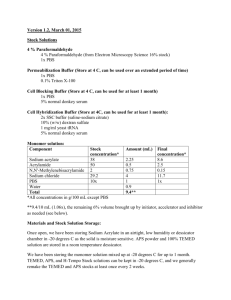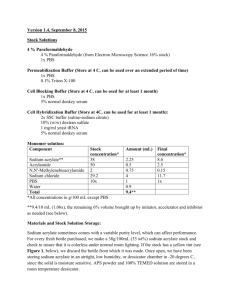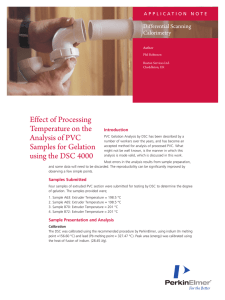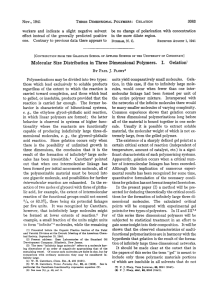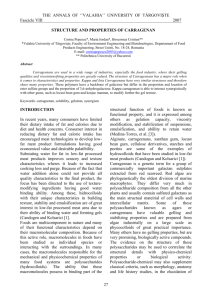Research Interests
advertisement
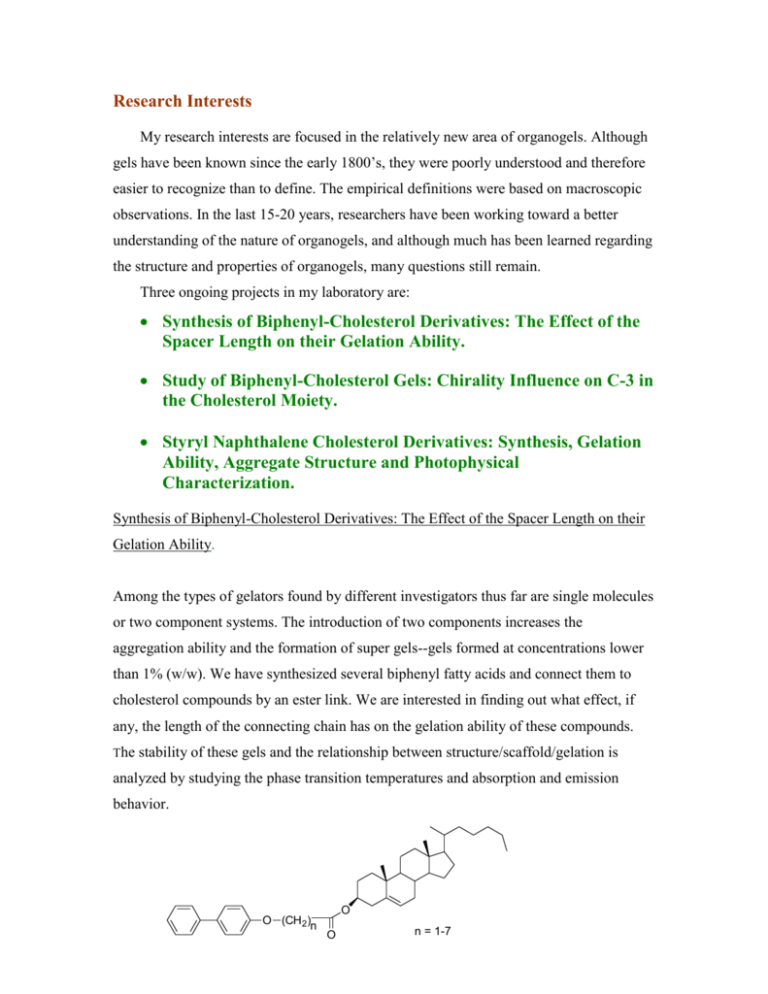
Research Interests My research interests are focused in the relatively new area of organogels. Although gels have been known since the early 1800’s, they were poorly understood and therefore easier to recognize than to define. The empirical definitions were based on macroscopic observations. In the last 15-20 years, researchers have been working toward a better understanding of the nature of organogels, and although much has been learned regarding the structure and properties of organogels, many questions still remain. Three ongoing projects in my laboratory are: Synthesis of Biphenyl-Cholesterol Derivatives: The Effect of the Spacer Length on their Gelation Ability. Study of Biphenyl-Cholesterol Gels: Chirality Influence on C-3 in the Cholesterol Moiety. Styryl Naphthalene Cholesterol Derivatives: Synthesis, Gelation Ability, Aggregate Structure and Photophysical Characterization. Synthesis of Biphenyl-Cholesterol Derivatives: The Effect of the Spacer Length on their Gelation Ability. Among the types of gelators found by different investigators thus far are single molecules or two component systems. The introduction of two components increases the aggregation ability and the formation of super gels--gels formed at concentrations lower than 1% (w/w). We have synthesized several biphenyl fatty acids and connect them to cholesterol compounds by an ester link. We are interested in finding out what effect, if any, the length of the connecting chain has on the gelation ability of these compounds. The stability of these gels and the relationship between structure/scaffold/gelation is analyzed by studying the phase transition temperatures and absorption and emission behavior. O (CH 2)n O O n = 1-7 Study of Biphenyl-Cholesterol Gels: Chirality Influence on C-3 in the Cholesterol Moiety. The purpose of this project is to understand the relationship between the structure of the gelator and its gelation ability. For this purpose, we investigate several biphenyl derivatives connected by an ester linkage to the C-3 of a cholesterol moiety. We have synthesized biphenyl-cholesterol compounds with an S and R configuration at C3. In some compounds the biphenyl is connected directly to the cholesterol. In some other gelators, there are eight methylene units in between the biphenyl and cholesterol. By molecular modeling simulations, we observe different packing arrangements for these compounds. By emission, absorption and circular dichroism spectroscopy, we investigate the nature of the aggregates formed. O O C O (S) O O O O (S) O C O (R) O O O (R) Styryl Naphthalene Cholesterol Derivatives: Synthesis, Gelation Ability, Aggregate Structure and Photophysical Characterization. In an effort to probe the relative importance of the different factors which may control the self-assembly of aromatic amphiphiles and therefore gelation ability in some organic solvents, we have focused our studies on styrylnaphthalene chromophores. Both and styrylnaphathalene fatty acids derivatives investigated, have similar absorption spectra and photophysics in dilute solutions. From simple modeling considerations we recognized that amphiphiles constructed by attaching a fatty acid chain to the para position of the phenyl ring of and trans-styrylnaphthalene should result in molecules having very different shapes. The -isomer is anticipated to exist preferentially in an extended configuration. In contrast, the -isomer is anticipated to have a bent shape. Analysis of the packing modes for these different amphiphiles has been studied in other organized media, such as L-B films. Our studies focus on the synthesis and photopysical characterization of the following aromatic-cholesterol derivatives, to gain a better understanding of structure/gelation relationship. O COOH O O COOH COOH O COOH Research Students: Fall 2002 Charles Constantine Ryan Holand Joe Laakso
